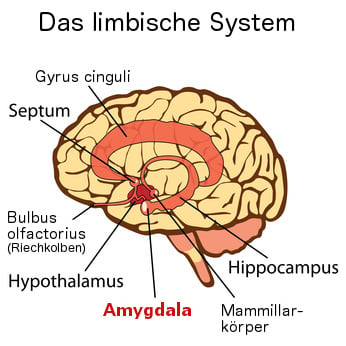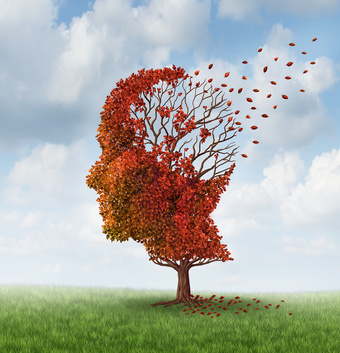What processes in the brain trigger the fear
Quite a few people harbor fear of certain situations. Although a fear reaction can have different causes, the different fears have one thing in common: they all originate in the amygdala, a region of the limbic system that is considered the fear center.
What exactly is the amygdala and what is going on in one’s brain in the face of fear?
 Also known as the amygdala, the amygdala is part of our limbic system and in turn part of our brain. This brain area is mainly responsible for the recognition and evaluation of situations as well as for the analysis of possible risks and the resulting emotional mechanisms. Accordingly, the amygdala controls, for example, our aggression or our fear. In particular, the tonsil nucleus also influences the autonomic functions of our body, such as circulation and respiration. Thus, if we hear our heart beating up to our throat when we are very afraid, the amygdala is responsible for this. For these reasons, this brain region is also considered the fear center.
Also known as the amygdala, the amygdala is part of our limbic system and in turn part of our brain. This brain area is mainly responsible for the recognition and evaluation of situations as well as for the analysis of possible risks and the resulting emotional mechanisms. Accordingly, the amygdala controls, for example, our aggression or our fear. In particular, the tonsil nucleus also influences the autonomic functions of our body, such as circulation and respiration. Thus, if we hear our heart beating up to our throat when we are very afraid, the amygdala is responsible for this. For these reasons, this brain region is also considered the fear center.
How does the amygdala trigger fear in us?
The amygdala continuously compares situations with information that has already been experienced in the past. If a circumstance occurs that has been stored in the amygdala as a “dangerous” experience, for example, the body is put on alert by the release of the stress hormones norepinephrine or epinephrine and a fear reaction is triggered. This results in feelings and emotions such as aggression, anger, sadness, which can lead to certain bodily reactions such as nausea, dizziness or palpitations(symptoms of anxiety).
Networking in the brain plays an important role in this process, especially since the amygdala is connected to the motor system via a nerve connection between the amygdala complex and the basal ganglia. Rational thinking, which is anchored in the cerebrum, does not come into play because information travels from the amygdala to the cerebrum much faster than vice versa. Even before rational thinking kicks in, the lightning-fast reaction of the amygdala causes the brain to respond very quickly to the corresponding danger with fear.
As studies have shown (including experiments with individuals whose amygdala was nonfunctional or even absent due to an accident that damaged the brain), the absence of a functioning amygdala resulted in a great loss of emotion. Consequently, without the intervention of the amygdala we would be exposed to risks without protection, because especially in dangerous situations no protective reflex would be triggered by the absence of the fear reaction.
More about learning fear

How we learn fear with the help of somatic markers
Our fear reactions are stored in our body memory with the help of somatic markers Particularly during anxiety reactions, people often experience powerful physical sensations so that they feel unable

How we learn fear with the help of somatic markers
Our fear reactions are stored in our body memory with the help of somatic markers Particularly during anxiety reactions, people often experience powerful physical sensations so that they feel unable











